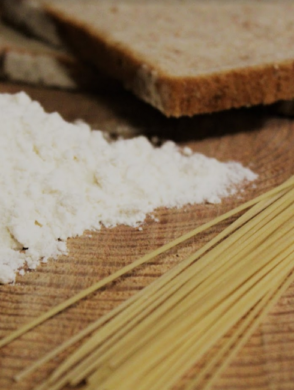The (Sneaky) Alternative Names For Gluten

Gluten intolerances and allergies have become more common these days, specifically over the last 50 years. Some of the reasons for our growing resilience to the once easily-digested crop may include the hybridization made to the grain for drought resistance (which has higher gluten content), pesticides used in the farming process, using unsprouted grains, and an immense overabundance of gluten-carrying processed goods. (Check out The Dental Diet for more information!)
No matter the reasons why, some of us need to avoid gluten as much as possible, if not altogether. So what happens when you go to the store, find a ketchup that doesn’t have “wheat” or “gluten” in the ingredients list, and yet you find yourself suffering from the symptoms of eating gluten? Well, I hate to tell you this, but gluten hides in a wide variety of ingredients and disguises itself in others. Once you start reading these labels, avoiding the ingredients listed below, you’ll understand why the “overabundance of gluten-carrying processed goods” is likely a major reason for these negative bodily symptoms.
If the label doesn’t specifically say “gluten-free”, it probably has one of these sneaky ingredients in the mix!
ALTERNATIVE NAMES FOR GLUTEN
- Triticum vulgare (wheat)
- Triticale (a cross between wheat and rye)
- Hordeum vulgare (barley)
- Secale cereale (rye)
- Triticum spelta (spelt)
GLUTEN-CONTAINING GRAINS
- Wheat
- Wheat berries
- Durum
- Emmer
- Semolina
- Spelt
- Farina
- Farro
- Graham
- Einkhorn
- Rye
- Barley
- Malt
- Brewer’s Yeast
- Wheat Starch
INGREDIENTS GLUTEN CAN HIDE INSIDE
- Vegetable protein/hydrolyzed vegetable protein–Can come from corn, wheat, or soy
- Modified starch/modified food starch–Can come from several different sources including wheat
- Natural flavor/natural flavoring–Can come from barley
- Artificial flavor/artificial flavoring–Can come from barley
- Caramel color–Now considered a safe ingredient, but check with the manufacturer if you need
- Hydrolyzed plant protein (HPP)
- Hydrolyzed vegetable protein (HVP)
- Seasonings–May contain wheat fillers
- Flavorings–May contain wheat fillers
- Vegetable starch–May contain wheat fillers
- Dextrin and maltodextrin–Sometimes made with wheat
(This information made available from Very Well Health and Celiac Disease Foundation)
Unfortunately, the FDA requirement for being certified as “gluten-free” means the food must contain less than 20 parts per million (ppm) of gluten. (In contrast, places like New Zealand and Australia require less than 5 ppm.) If you have a severe intolerance or allergy to gluten, it would probably be best for you to buy whole foods and make it yourself, avoiding the risk entirely. (Check in with your naturopath or nutritionist to see what’s the right course for you!)
Having this kind of information at your fingertips gives you the power to make the healthy choices for you and your family. We hope this list will give you some confidence and assurance that you’re making the best decisions in the aisles your next grocery trip!
You can click the button below to go back to the Nutrition articles, or you can venture over to our DIY Nutrition recipes and the Nutrition supplies and products we love!
Disclaimer: All information contained herein is intended for educational purposes only. It is not provided to diagnose, prevent, or treat any disease, illness, or injured condition for any human or animal, and Mother Nature’s Truths, as well as the author(s), contributor(s), publishers, and owners accept no responsibility for such use. Anyone suffering from any disease, illness, or injury, or who has an animal suffering from such, should consult with their physician or veterinarian. The statements herein have not been evaluated by the Food and Drug Administration.
Nu